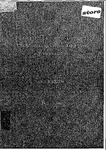THE ROLE OF THE ROV WITHIN INTEGRATED GEOTECHNICAL AND HYDROGRAPHIC SITE INVESTIGATION
| dc.contributor.author | GILLON, ROSEMARY JAYNE BROWNING | |
| dc.contributor.other | Faculty of Science and Engineering | en_US |
| dc.date.accessioned | 2012-08-06T09:43:52Z | |
| dc.date.available | 2012-08-06T09:43:52Z | |
| dc.date.issued | 2002 | |
| dc.identifier | Not available | en_US |
| dc.identifier.uri | http://hdl.handle.net/10026.1/1116 | |
| dc.description.abstract |
The acquisition of marine survey data is traditionally undertaken from surface vessels including boats and temporary rigs. Translation of these techniques to the nearshore zone is a complex task and requires equipment adaptation and. often the sacrifice of data coverage. The remotely operated vehicle (ROV) offers the potential for overcoming some of the standard nearshore survey Concems, providing remote intervention and data acquisition in areas of restricted access. In situ testing is the most efficient and reliable method of acquiring data with minimal sediment disturbance effects. Research has been undertaken into the viability of nearshore cone penetration testing (CPT) which has shown the T-Bar flow round penetrometer to be a possible solution. Data could be acquired in sediments with undrained shear strengths of up to 300 kPa from a bottom crawling ROV weighing 260 kgf and measuring 1 m in length by 0.6 m in width. The collection of sediment cores may be necessary in areas requiring ground truthing for geophysical or in situ investigations. A pneumatic piston corer has been designed and manufactured and is capable of collecting sediment cores up to 400 mm in length, 38 mm in diameter, in sediment with undrained shear strength of 17 kPa. To ascertain additional sediment characteristics in situ, a resistivity subbottom profiling system has also been designed and tested and allows for discrimination between sediment types ranging in size from gravel to silt. The integration of equipment and testing procedures can be fiirther developed through the use of integrated data management approaches such as geographical information systems (GIS). An offthe- shelf GIS, Arclnfo 8, was used to create a GIS containing typical nearshore data using the Dart estuary as a case study location. | en_US |
| dc.description.sponsorship | Britannia Royal Naval College | en_US |
| dc.language.iso | en | en_US |
| dc.publisher | University of Plymouth | en_US |
| dc.title | THE ROLE OF THE ROV WITHIN INTEGRATED GEOTECHNICAL AND HYDROGRAPHIC SITE INVESTIGATION | en_US |
| dc.type | Thesis | |
| dc.identifier.doi | http://dx.doi.org/10.24382/4962 |
Files in this item
This item appears in the following Collection(s)
-
01 Research Theses Main Collection
Research Theses Main


